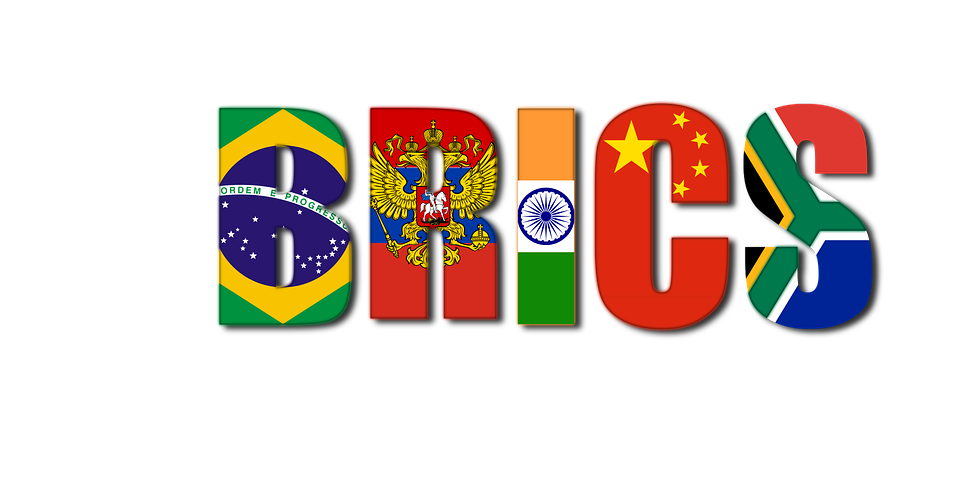Collaborative indigenous developments are much healthier than solo developments
Brazil and India have a long list for Defence buying. Many if not all in the world of Defence await an opportunity to fish deals from these two on the rise nations. Most of the biggies have a separate team working for dealing with Indian and Brazilian buyers, especially defence buyers. Major players in defence industry like the US, China, France, Germany etc., invest major part of their federal budgets on to Defence establishments but most part of the investment go as internal funds that eventually produce indigenous yet world class defence systems and standards. They display a solo performance. Where as in BRIC nations, partly excluding Russia and China which are marginally far better than the other two in the acronym, most of the Defence spending go into buying direct finished goods like aircrafts, firing systems, water fare and at times raw technology. This (finished defence good procurement), according to some analysis, is good but when critical, might not prove as good as other times. Indigenous development is considered to be advantageous for many reasons, out of which the following are worthy giving a thought. Indigenously developed solutions are expected to be efficient, sustainable and effective. Solutions can be quickly obtained without having to face any unwanted delays caused from the responding end. Economical and employment growth can certainly be expected. The nation can consider itself to be more self-reliant and confident to face any and many situations of various kinds. After all, science can try to explain anything in the world, so a nation which has indigenous knowledge can think and explain anything that it faces with near to certainty. Industrial development and domestic capacity as well as capabilities rise more than considerably. Nation’s Brand Image is another way of viewing indigenously developed goods and technology. Indigenous developments can place a nation in technological competence with others who might well be established in the field of Defence manufacturing and selling. An indigenously developed system or product might create great demand if it proves to be more economic and worth for every penny spent on it. This in turn adds to economic reserves of a nation. Moreover, a product buyer can be offered more variety to procure according to his requirement. Another important aspect is a chain sequential benefit starting with reduction in imports, and then this implies increased exports, which in turn implies more foreign currencies can be accumulated in national treasury and it becomes popular star in the world.
Reduced Imports -> Increased Exports -> Foreign currency reserves rise
More imports and fewer exports leave a great impact on liberalization policies of a nation. Tightening the liberalization policies governing a nation’s defence procurement is a serious step towards better defence rather than buying the most deadly, point accurate, ultimate missile system.
 When we talk about the Defence procurement policies of Brazil and India, they are mostly not alike. India faces a lot of border line threats which is unlike Brazil’s condition where in most of the Defence Brazil need is for internal and international drug racketing control. Owing to its preparation for the Fifa 2014 and Rio 2016 Brazilian government gets its valets ready to spend on most resilient air craft and warfare to offer the world glitch free and uninterrupted games. China is in a continuous stride to multiply its knowledge base and simultaneously, military war fare, mostly indigenous developments. China is supposed to be opposing Russian innovation in many fields including Defence research and development. Whereas the first two third of the acronym BRIC, Brazil-India-Russia are strongly bonded to develop collaborative indigenous knowledge and bring to the fore, some of the best competing technologies in Defence Industry. There are more than handfuls of MoUs signed by Indian Defence research entities with Brazilian as well as Russian peers anywhere on the globe. DRDO of India signed and MoU with Embraer, Brazilian Aircraft maker, to design and build a compatible base for Indian origin AWAC system. As scheduled, Brazil could hand over a best in class flight EMB-145, fully tailored to let Indian made AWAC system embed into it and make the most out of its capability when on ride. The Centre for Air Borne Systems, Bangalore a specific wing of Indian DRDO test flies these systems by the year end and bring an indigenous (in fact collaboratively indigenous) product into its armoury without relying on usual external bodies in between.
When we talk about the Defence procurement policies of Brazil and India, they are mostly not alike. India faces a lot of border line threats which is unlike Brazil’s condition where in most of the Defence Brazil need is for internal and international drug racketing control. Owing to its preparation for the Fifa 2014 and Rio 2016 Brazilian government gets its valets ready to spend on most resilient air craft and warfare to offer the world glitch free and uninterrupted games. China is in a continuous stride to multiply its knowledge base and simultaneously, military war fare, mostly indigenous developments. China is supposed to be opposing Russian innovation in many fields including Defence research and development. Whereas the first two third of the acronym BRIC, Brazil-India-Russia are strongly bonded to develop collaborative indigenous knowledge and bring to the fore, some of the best competing technologies in Defence Industry. There are more than handfuls of MoUs signed by Indian Defence research entities with Brazilian as well as Russian peers anywhere on the globe. DRDO of India signed and MoU with Embraer, Brazilian Aircraft maker, to design and build a compatible base for Indian origin AWAC system. As scheduled, Brazil could hand over a best in class flight EMB-145, fully tailored to let Indian made AWAC system embed into it and make the most out of its capability when on ride. The Centre for Air Borne Systems, Bangalore a specific wing of Indian DRDO test flies these systems by the year end and bring an indigenous (in fact collaboratively indigenous) product into its armoury without relying on usual external bodies in between.
The India-Russia bond is strong as well. In fact it is an old bond still going good, better, best. Most of Indian navy is comprised of Russian makes than any other in the world. But, the difference is a joint development process that takes place instead of buying finished goods which is a case with aircraft procurement. Very recently, Indian DRDO successfully tested one of its indigenously designed and produced aircraft engine, Kaveri, on a modified Russian IL-76 at Gromov Flight Research Institute (GFRI), Moscow, Russia. Another release earlier in 2011 states the collaborative Space research development and trade between India and Russia could earn not less than $20bn by 2020. India’s collaborative participation in Russia’s Global Navigation Satellite System turns out to be a major turnaround for either of the nation’s defence and space command.
Apart from buying in huge numbers from regular sources, Brazil, India, Russia and also China define a great sense in investing in indigenous or rather collaboratively indigenous developments.
BRICs with many varieties in front of them can pick the best choice.
Defence Industries digs into more of such collaborative developments that are ready to prove best to the world.



0 Comments